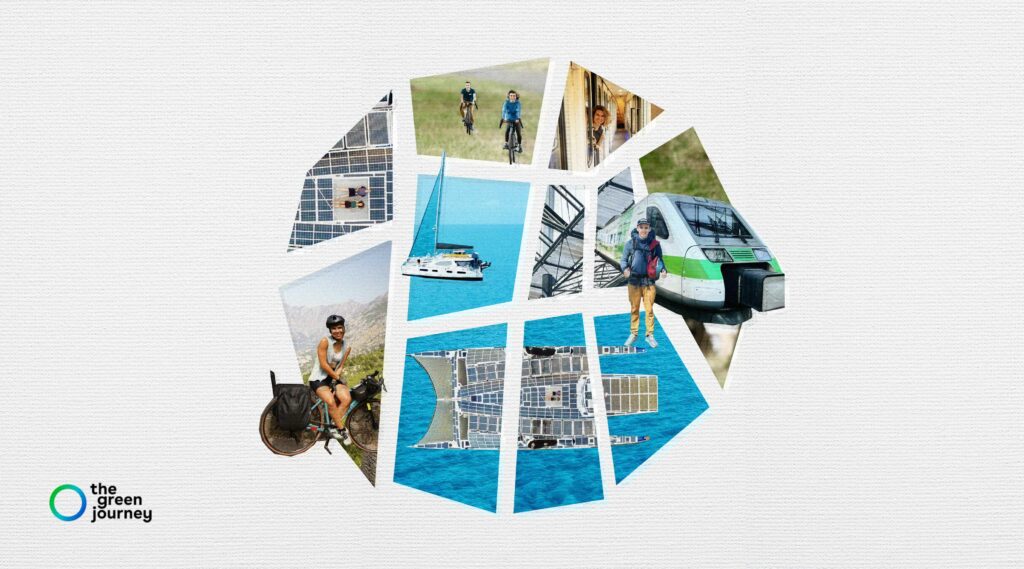Last month, the leaders of the world’s major industrialized nations got together, as they have every year since the early 1970s, to talk about matters of international importance. The pandemic was top of mind at the G7 summit, of course, but so was the climate crisis.
Just days before the summit, scientists had reported a new record for carbon dioxide concentrations in the atmosphere—419 parts per million, the highest since accurate measurements began nearly 60 years ago.
The crisis is now impossible to ignore.
The G7, or Group of Seven, consists of Canada, France, Germany, Italy, Japan, the United Kingdom, and the United States. Together, their economies comprise nearly half the world’s gross domestic product, about 10 percent of the world’s population, and more than a quarter of the greenhouse gas emissions. So, you know, they’re kind of influential when they get together. As the European Commission’s website puts it, “decisions taken at the G7 are not legally binding, but exert strong political influence.”
What went down last month
So, what legally non-binding decisions did the G7 make regarding climate? Here’s the topline summary:
- Reach net zero emissions no later than 2050
- Cut collective emissions in half by 2030
- Increase and improve climate finance over the next few years
- Conserve or protect at least 30 percent of each nation’s land and oceans by 2030
Depending on whom you ask, this was a pretty good outcome or it was resoundingly lame. The New York Times said the G7 had taken “aggressive climate action.” The Natural Resources Defense Council and the World Resources Institute, which are both nonprofits working on climate change solutions, said the nations had “raised the bar” on climate action.
Others were disappointed and scornful. The summit’s steak barbecue, private jets, and air shows were not a good look for leaders claiming to care about greenhouse gas emissions. The director of Greenpeace called the meeting “very disappointing.” To climate activist Greta Thunberg, the leaders seemed “to be having a good time presenting their empty climate commitments and repeating old unfulfilled promises.” And in a roundup of utterly unimpressed reactions from climate action groups, one commented, “This G7 leaves the success of COP26 on a knife edge.”
This last comment gets to the heart of why the G7 matters. It sets the tone for the next round of international climate talks—the aforementioned COP26. (You could call it the 26th Conference of the Parties to the United Nations Framework Convention on Climate Change, or UNFCCC, but COP26 sounds much snappier, no?)
Patricia Espinosa, the head of the UNFCCC, summed it up this way in a speech shortly before the summit: “Nations are still far from the goals of the Paris Agreement and stabilizing global temperature rise at 1.5C by the end of the century….The decisions G7 nations make in the next few weeks will have a major impact on whether nations achieve success at COP26, whether they make a truly green recovery from COVID-19, and if they eventually reach their long-term climate goals under the Paris Agreement.”
“Nations are still far from the goals of the Paris Agreement and stabilizing global temperature rise at 1.5C by the end of the century.”
After four years of a climate leadership vacuum under the Trump administration, it’s understandable that any collective climate agreement between the U.S. and other leading nations would draw some applause. As the World Resources Institute and the Times noted, it was the first time the G7 had agreed together to cut their emissions by 2030 and to regularly update their strategies for doing so.
What did the G7 miss?
Fiddling while coal burns. The leaders agreed to stop financing “unabated international thermal coal power generation” by the end of this year. But they didn’t set a date to stop burning coal, period. This is a problem, given that global carbon emissions are set for their second-biggest increase in history, according to the International Energy Agency—driven by coal use. China is still building new coal plants at home and abroad. That’s not likely to change anytime soon while the G7 allows itself an extended runway to coast ahead with the dirtiest fuel.
Show me the money. BBC environment analyst Roger Harrabin got straight to the point: “For the umpteenth time the rich club has failed to deliver on its promise to channel $100bn a year to poor nations coping with a heating climate.” That promise was made by developed countries in 2009, acknowledging that transforming our energy systems requires capital that some countries don’t have. It’s time to pay up.
Too much talk, too little action. In general, the big-sounding promises coming out of the G7 summit got the side-eye from environmental groups who noted we have heard a lot of this before. “This summit feels like a broken record of the same old promises,” said John Sauven of Greenpeace UK. “Without agreeing to end all new fossil fuel projects — something that must be delivered this year if we are to limit dangerous rises in global temperature — this plan falls very short.”
Next Steps
COP26 will take place in Glasgow, Scotland, from October 31 to November 12. While change on the international stage can be slow, the world needs concrete actions that feel real: financial commitments, fossil fuel expiration dates, and emissions trend lines that are moving in the right (downward) direction. While most of us won’t be involved in the big talks, the leaders involved are representing all of us. The more loudly we demand clear air and affordable energy for all, the harder it will be to substitute statements for meaningful, immediate steps.















